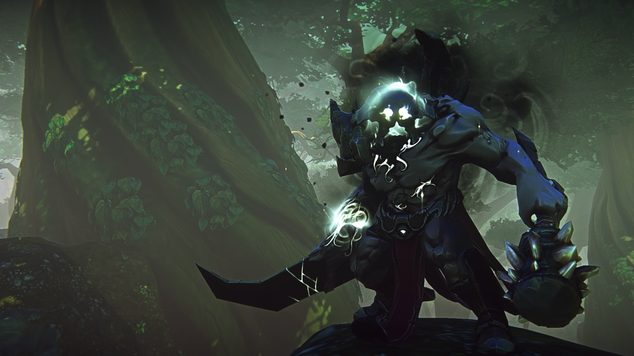I wrote at the tail end of last week about the buy to play model adopted by ArenaNet. Within that editorial I also mentioned PlanetSide 2 as one of the few games that was fair in its delivery of content, despite being a free to play game. What Sony Online Entertainment offer in their newer free to play games (excluding EQ2) is a system where the barrier of entry is removed entirely so that potentially huge numbers of potential can access the game. With time, Sony Online Entertainment then hope that playing the game (and enjoying it) will bring you to part with some money. It’s a tactic that worked for me and while I’ve never subscribed to PlanetSide 2, despite the excellent bonuses it provides, I’ve parted with enough money to cover a boxed sale at the very least.
Sony Online Entertainment's approach is refreshing in a free to play industry because they aren’t stingy. Titling any game as free to play often gives me the hibigeebies because I’m so used to having to hand over my credit card details in order to break down the artificial barriers that are put in my way. Despite this, I’ve never once had such feelings playing a game from Sony Online Entertainment and as a result, EverQuest Next has every potential of proving to the masses that massively multiplayer games can be free to play and just as fair as the likes of Guild Wars 2.

The reason why I think EverQuest Next is so important is not only because of its use of Storybricks or Voxel technology or even the fact that terrain is destructible. The reason why is because the industry needs to see that massively multiplayer titles are not only as popular today as they were at World of Warcraft’s height, but that there’s also significant money to be made in the genre without the reliance on a subscription, or the need to nickle and dime players through gated free to play.
It’s fair to say the genre’s been through the mill of late with several high profile cancellations, and WildStar falling off people's radar in record time, it’s not entirely surprising that the public, publishers and developers see massively multiplayer games as a giant risk and a potential financial black hole. In many ways you’d be right in wondering why developers even continue to create an MMO when the likes of DOTA 2, SMITE or League of Legends are twice as popular, significantly cheaper and likely yield more net income.
Part of me hopes that companies such as Sony Online Entertainment create games like EverQuest not because of its revenue potential (though that is unquestionably a factor) but because they realise the genre, in comparison to others, has near infinite potential for immersion. The tales that unfold from games like Eve Online cannot be compared to anything else out there: there simply isn’t the freedom or the scope to immerse yourself in the world like there are in massively multiplayer games. For that very reason, there will also be a playerbase who want to escape the drudgery of their day to day lives and slip into the shoes of their favourite avatar.

So back to EverQuest Next. My hopes for the game rest on Sony Online Entertainment remaining fair to the playerbase with the realisation that by doing so, potential earning is limitless. If we take Team Fortress 2 as an example, even though the genre is different, it’s switch to a free to play title in many ways opened the door for other developers of any genre to follow suit. Considering the only things on offer in Team Fortress 2 are skins, it’s fascinating to think that when the switch was made (without restricting play in any way) revenues quadrupled between 2007 and 2011. Not only that, but by 2010 players who produced user generated content shared profits of over $3 million. Fast forward to 2013 and Team Fortress 2 has earned $139 million. Let that sink in for a moment. As a comparison, DOTA 2 by industry estimates earned $80 million from microtransactions during 2013.
If Sony Online Entertainment enter the arena with a AAA free to play massively multiplayer game, but one which places absolutely no restrictions on players it’ll not only be a first in the genre to do so, but one coupled with unrivalled technology and innovation. Guild Wars 2, having earned $32 million for the fourth quarter in 2013, proves that there’s a market for non-advantageous items that are purely cosmetic and Sony Online Entertainment have already proved their pedigree in this department from the brilliant items on offer in PlanetSide 2 and Landmark. If they can couple this with Landmark, whereby Landmark homes and creations worm their way into EverQuest Next, it really will be something we’ve never witnessed before.
To read the latest guides, news, and features you can visit our EverQuest Next Game Page.




